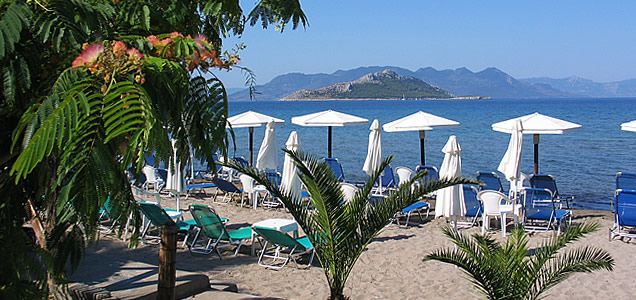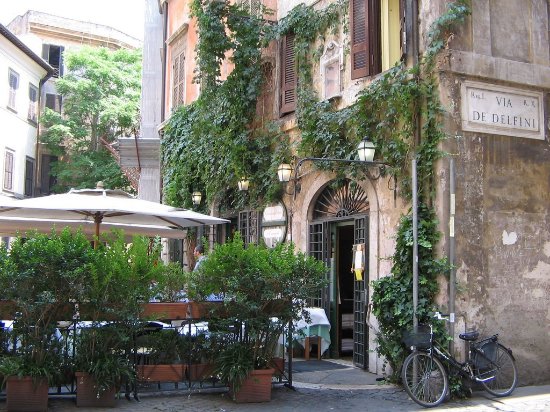Winter has now officially descended upon us. To bring some brightness to these dark December days I am writing a three-part series on my favorite Mediterranean islands. Today we're traveling to the last island, Santorini. This Greek jet-setting, jaw-dropping, pleasure-bomb of an island is unparalleled for sheer beauty. However, Santorini also makes some stunning wines, offers archaeological ruins, and has some mind-blowing walks.
Grapes are grown close to the ground in baskets to protect against winds & conserve waterSantorini has one of the most unique terroirs in the Mediterranean. The entire island is part of a large volcano system---most of it underwater. In fact, Santorini is part of a cluster of several surrounding islands that were formed millenniums ago by catastrophic eruptions. This ring of islands is actually the tops of the underwater volcanoes that have collapsed into the sea, leaving only their tips exposed.
Gaia hosted WineKnows in their captivating "tasting room"Santorini's volcanic soil makes for some terrific wines that ooze minerality. Summers are hot and there is very little water on the island, so the vines must send their roots deep into the soil to seek moisture. On this journey penetrating deep into a soil rich in magnesium, iron, calcium and selenium, roots bring back to the plant fascinating flavors for their grapes. There are several excellent wineries on the island. My favorite is Gaia (who is even experimenting with aging wines on the ocean floor).
The walk from Fira to Oia is one of the most spectacular on earth
But, there is so much more to Santorini than its wine. The most compelling thing about the island is its mesmerizing natural beauty. For walkers, there is no better way to appreciate its magnificence than the walk from Fira (the main town) to Oia. This hike, which parallels the sea, is arduous and take >2 hours, but its worth every moment (and you can take the bus back to Fira). Another don't miss is the archaeological ruin at Akrotiri, Santorini's version of Pompeii. Destroyed by volcanic ash in 1,700 BC, this ancient town is worth a visit.
Mextaxy Mas, only a 10 minute cab ride from the main town, feels a world awayFor me, another irresistible reason to visit Santorini is to dine at Metaxy Mas. Located in the center of the island in a small rural village away from the hoards of tourists, this restaurant shouldn't be missed. Metaxy Mas has it all: fabulous food, a sexy setting (be certain to reserve for the terrace), and an authentically Greek feel. The name translates to "between us," and between you and me, Metaxy Mas is a winner.
 |
| Breakfast at Anteliz is a special event. |
Santorini is replete with a number of hotels and apartments in every price category, however, look no further than Anteliz Suites for a place to stay. Located in the island's capital town of Fira (but away from the crowds), this spot delivers on every level....from breathtaking panoramic views and superb service (family owned, there is nothing these people can't do can't do for you), to wonderfully-outfitted rooms. If you can spring for the Anteliz Master Suite, you'll enjoy 1,200 square feet of enchantment including a huge private terrace, however, even their regular hotel rooms are noteworthy.
Cheers to a healthy, sunny and travel-filled 2022!
















































